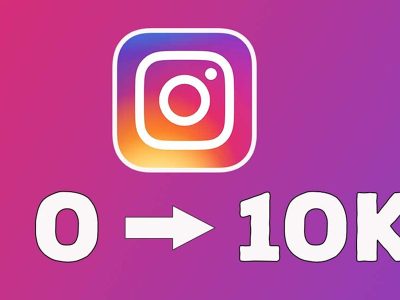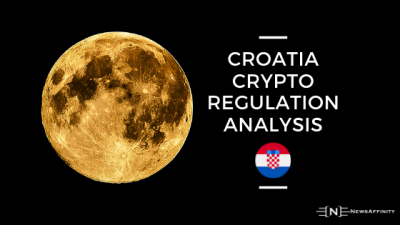Understanding of Programmatic Advertising
In today’s fast-paced digital industry, Programmatic Advertising has grown as an important tool for organizations to reach their target customers with accuracy and efficiency. This innovative technique relies on powerful algorithms and automation to streamline the ad buying process, providing advertisers with greater control, real-time optimisation, and increased ROI.
Gourmet Ads provides a comprehensive range of programmatic advertising services to assist brands and marketers effectively reach their target demographic. Businesses can strengthen their advertising efforts and achieve their marketing objectives by working with Gourmet Ads.
In this post, we’ll look at Programmatic Advertising and its essential features, benefits, and impact on the advertising business.
Programmatic Advertising Definition
Programmatic Advertising is a real-time automated way of buying and selling ad inventory via digital platforms. It targets specific audiences with advanced algorithms and data-driven decision-making, providing personalized messages at scale. Demand-side platforms (DSPs) and supply-side platforms (SSPs) enable a series of automated operations such as bidding, ad placement, and optimization.
Benefits of Programmatic Advertising
There are various advantages to using programmatic advertising.
Advertisers and businesses benefit greatly from programmatic advertising. Firstly, it offers unique targeting capabilities, allowing advertisers to precisely reach the right demographic. Programmatic advertising offers personalized message by using data insights, leading to better engagement and conversion rates.
Furthermore, Programmatic Advertising allows advertisers to optimize their campaigns in real time. Campaigns may be optimized for optimal performance through continual monitoring and automated modifications, ensuring that ad spend is used efficiently. This data-driven approach reduces wasted impressions while increasing ROI.
Additionally, programmatic advertising improves campaign transparency and control. Advertisers can view detailed performance analytics such as impressions, clicks, conversions, and cost per acquisition. These insights help advertisers to assess the efficacy of their campaigns, make data-driven decisions, and optimize future tactics accordingly.
Components of Programmatic Advertising
- The demand-side platform (DSP) is the first component of programmatic advertising. Advertisers and agencies use this software to purchase ad space in an automated and real-time manner. The DSP allows advertisers to provide targeting parameters such as demographics, interests, and location, and then bids on ad inventory that meets these specifications.
- The second component is the supply-side platform (SSP). This is an inverse of a DSP and is used by publishers to sell advertising space. The SSP is linked to ad exchanges, which are online marketplaces where publishers can sell inventory to interested buyers. It also helps publishers optimize ad placements and increase revenue by connecting their inventory with the right demand sources.
- The ad exchange is the third component. This is where ad impressions are really bought and sold. Ad exchanges link DSPs with SSPs, allowing them to exchange information and facilitate real-time transactions. The highest bidder wins the auction, and their ad is displayed to the user. This entire process takes milliseconds, making programmatic advertising highly rapid and efficient.
- The final component is data management platforms (DMPs). Massive amounts of data are gathered and analyzed by DMPs from a number of online and offline sources, including websites and mobile apps. This data consists of user activity, demographics, interests, and other things. DMPs help advertisers and agencies gain a deeper understanding of their target market and make smarter ad placement choices. By utilizing data from DMPs, advertisers may create highly targeted and personalized ads that are more likely to be interacted with by their target demographic.
How Does Programmatic Advertising Work?
After going over the key concepts, let’s see how programmatic advertising actually works. The publisher’s SSP sends a bid request to the ad exchange with details about the available ad inventory whenever a user accesses a website or launches a mobile application. The DSPs examine the information available and plan regarding whether or not to place a bid on the impression after receiving this bid request from the ad exchange.
DSPs assess the user’s profile, the content of the website or app, and other relevant elements to determine whether the impression meets the targeting criteria of their campaign. If a DSP decides to bid, it sends the ad exchange its bid and targeting information. The ad exchange gathers all bids and chooses the highest one.
When the winning bid is determined, the ad exchange notifies the publisher’s SSP, who then delivers the ad to the user’s device in real time. This entire procedure takes milliseconds, ensuring that the viewer sees the ad before moving on to the next page or app screen.
Key Features and Mechanism
Programmatic advertising is based on the principles of data-driven targeting, real-time bidding (RTB), and artificial intelligence (AI). It uses massive amounts of user data, including as demographics, browsing behavior, and purchase history, to discover and engage the right audience segments. Advertisers select their target audience based on criteria such as location, age, interests, and online behavior.
Programmatic advertising relies heavily on real-time bidding. Advertisers bid for ad impressions in an auction-style setting, with the highest bidder receiving the right to display their ad. This ensures that advertising is shown to the most relevant users at the lowest possible cost.
Furthermore, programmatic advertising use AI technologies to analyze data and make smart choices in real time. Machine learning algorithms evaluate ad performance, optimizing campaign elements such as ad design, targeting, and bidding techniques to obtain better outcomes.
Creating Powerful Programmatic Ad Campaigns
Programmatic advertising has emerged as an essential strategy for marketers seeking to reach their target demographic in an efficient and successful manner. Programmatic ad campaigns may provide personalized messages at scale by leveraging data and automation. Here are some approaches to creating effective programmatic advertising campaigns:
Set specific campaign goals
Define your campaign objectives and KPIs (Key Performance Indicators) in advance. Are you looking to enhance website traffic, brand exposure, lead generation, or conversions? Your campaign strategy will be guided by clear objectives.
Determine Your Target Audience
Understand the demographics, interests, and behaviors of your target audience. Create detailed buyer personas using data sources like as customer profiles, website analytics, and market research.
Choose the Right Ad Formats
Programmatic advertising offers a variety of ad formats, including display, video, native, and audio. Choose formats that are relevant to your advertising goals and resonate with your target audience.
Implement Real-Time Bidding (RTB)
RTB allows you to bid on ad inventory in real-time, guaranteeing that your ad is seen to the appropriate audience at the appropriate moment. Determine your bidding techniques based on your campaign objectives, such as cost-per-click (CPC) or cost-per-acquisition (CPA).
Determine Your Bidding Strategy
After you’ve decided on an ad type, you’ll need to decide on a bidding strategy. This is the amount you are willing to spend for each ad impression.
Launch Your Campaign
Once everything is in place, you are ready to launch your campaign. You will need to check your campaign on a regular basis to ensure that it is operating as planned and make any necessary adjustments. However, if you follow the procedures outlined above, you should be well on your way to conducting a successful programmatic ad campaign.
Programmatic advertising is a very effective and efficient method of reaching your target audience and achieving real results. You may benefit from Gourmet Ads’ expertise, advanced targeting capabilities, real-time optimization, and comprehensive support by collaborating with a programmatic advertising agency like Gourmet Ads.

















Comments